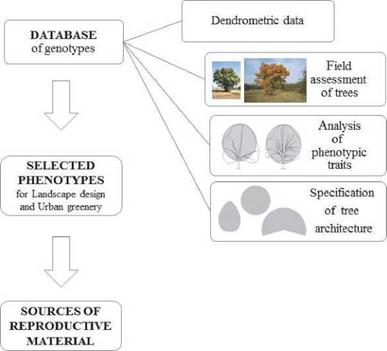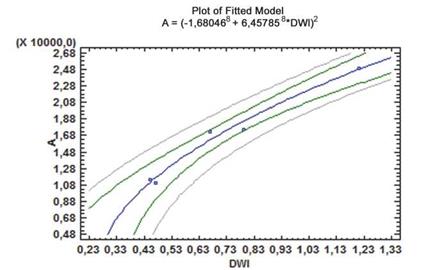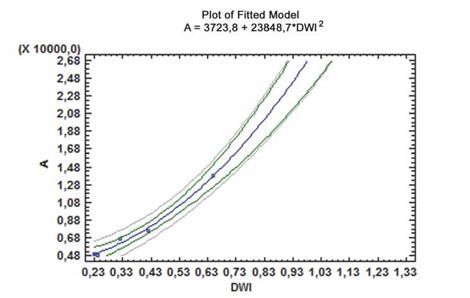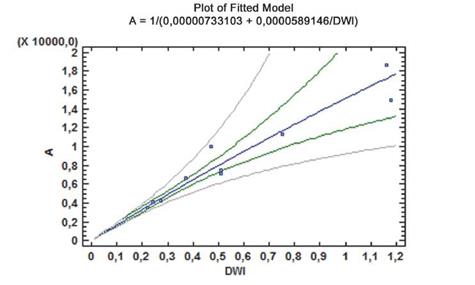One-year old seedlings of the wild pear and service tree were analysed. Plant material was produced directly for purposes of the experimental assessment of the physiological parameters of the analysed woody plants. Reproductive material came from the original stands of Sorbus domestica (Kosihovce, altitude 250 m) and Pyrus pyraster (Trnie, altitude 540 m) in Slovakia. The seeds of both species passed winter pre-sowing treatment in the cold greenhouse with temperatures ranging from +5°C to -5°C and germinated in the boxes with fertilized sowing substrate based on white sphagnum (peat moss). In the phenological stage "expanded cotyledons" (Sensel & Paganova, 2010) seedlings were placed in the plant boxes (content 1.17 L) filled with fertilized peat substrate (white sphagnum, pH 5.5-6.5; fertilizer 1.0 kg. m-3). Construction of the root boxes enabled the analytical assessment of the root growth and root structures (Fig. 3). The boxes were placed under a polypropylene cover with 60% shading. The plants were regularly watered and maintained on 60% and 40% of the full substrate saturation, two variants according to a differentiated water regime. Variant "stress" was supplied with water at 40% of full substrate saturation and "control" at 60% of full substrate saturation. The model of the differentiated water regime was maintained for 170 days (from April to the end of September).
After exposure to water stress the size of the leaf area (A) was calculated from leaf scans using ImageJ software (URL 2). The dry weight of the roots, shoots and leaves (DW) was determined gravimetrically, additionally leaf water content (LWC) was calculated. For metabolic characteristics, the total chlorophyll and carotenoid content were determined in the leaves according to the methods described by Sestak & Catsky (1966).
|
Fig. 6. Assessment and selection of the sources of reproductive material for utilization of indigenous woody plants in landscape planning and urban greenery |
|
Fig. 7. The root box constructed from a metal frame and glass front wall used for the analytical assessment of the root growth and structures (Drobna, 2010). |
Data were analysed from two growing seasons in 2010 and 2011 for each taxon under two variations of water regimes (40% and 60% substrate saturation). There was calculated S: R ratio for particular species and both variants of the substrate saturation. The relationship between chlorophyll and carotenoid content of the plants under stress and control conditions, as well as impact of water stress on complex of assimilatory pigments were analysed. A statistical assessment of these parameters was conducted by regression analysis and multivariate analysis of variance of using the statistical software Statgraphics Centurion XV (StatPoint Technologies, USA). A P < 0.05 was consisted statistically significant.
The reactions of two woody plant species Pyrus pyraster a Sorbus domestica on water stress in the juvenile phase of their growth (one-year old seedlings) were analysed in the model experiments with controlled water regime. In the first step of analysis, the size of the leaf area, dry weight of roots, shoots and leaves (DW) were determined, leaf water content calculated and the content of assimilatory pigments was quantified. In the last analysis, the significant interspecific differences in the size of leaf area were documented (Table 2), when Sorbus domestica had nearly twice higher leaf area than Pyrus pyraster. The difference in the size of the leaf area has not been accompanied by significant differences in accumulation of dry mass of leaves. However, there were differences in the investment of assimilates, Sorbus domestica used them for growth of the leaf area and Pyrus pyraster for construction of the mesophyll structures. The interspecific differences are documented also by values of the specific leaf area (SLA) for Sorbus domestica (SLA = 0.0219 m2.g-1) and for Pyrus pyraster (SLA = 0.0157 m2 g-1).
Assessment of the dry mass distribution into particular organs of woody plats confirmed different strategies for analysed species. Comparison of the values of shoot : root ratio (S : R) for analysed taxa is also interesting. There were found statistically significant differences, between wild pear and service tree. According to the obtained data, Sorbus domestica preferentially distributes higher ammount of dry mass to roots (S : R = 0.70), while distribution of dry mass is rather balanced between underground and upper organs of Pyrus pyraster (S : R = 1.11) (Table 2). The impact of water stress on distribution of dry mass to organs has not been documented. According to the obtained results seedlings under stress and in control conditions had very similar values of the shoot : root ratio (S : R = 0.87 and 0.93). The impact of water stress is manifested in production of dry mass of roots, that represents average value of the parameter for one plant (DWR=0.59g). While in control conditions the average value of this parameter is nearly twice higher (DWR=1.22g). Dry mass distribution patterns typical for particular species are determining also under conditions of differentiated water regime. Service tree (Sorbus domestica) preferably accumulates dry mass in root system, wild pear (Pyrus pyraster) distributes evenly dry mass to upper and undreground organs. Distribution of dry mass in organs of analysed woody plants has not been significantly influenced by drought. Species differentiation in shoot-root ratio (S:R) in favour of the distribution of dry mass in the root was confirmed for young cuttings of poplar Ibrahim et al.(1997).
The content of assimilatory pigments was also evaluated for both species. Significant differences were found in the total chlorophyll content (CC) and the content of carotenoids (CAR) (Table 2). Seedlings of Sorbus domestica cumulated a significantly lower content of total chlorophyll and carotenoids in the leaves than did the Pyrus pyraster seedlings. The interspecific differences are documented by average values of the total chlorophyll content Sorbus domestica (311.67 mg. mm-2 *10-6) and Pyrus pyraster (490.90 mg. mm-2 *10-6) and also by average values of the carotenoid content for Sorbus domestica (72.72 mg. mm-2 *10-6) and for Pyrus pyraster (117.07 mg. mm-2 *10-6). The ratio of carotenoid to total chlorophyll content (CAR : CC) had the same value (0.24) for both species. In this context, significant differences in the content of the assimilatory pigments indicate differences in the performance of the assimilatory apparatus of the wild pear and service tree in the juvenile phase of growth.
Content of assimilatory pigments of the seedlings was negatively affected by water stress. Under conditions of water scarcity seedlings produced significantly less chlorophyll (346.02 mg. mm-2 *10-6), as well as carotenoids (84.42 mg. mm-2 *10-6) than in control conditions (CC=456.55 mg. mm-2 *10-6, CAR = 105.37 mg. mm-2 *10-6). The ratio of the carotenoid content to total chlorophyll content CAR : CC differs significantly according to level of the substrate
|
Parameter Sourced, of variance^^ |
A (mm2) |
DWr (g) |
DWl (g) |
DWs (g) |
S/R |
lwc (%) |
CC (mg. mm-2)* 10-6 |
CAR (mg. mm-2)* 10-6 |
CAR/CC |
|
Sorbus domestica |
12016,5b |
1,19b |
0,55a |
0,20a |
0,70a |
52,44a |
311,67a |
72,72a |
0,24a |
|
Pyrus pyraster |
6286,99a |
0,62a |
0,40a |
0,26a |
1,11b |
50,09a |
490,90b |
117,07b |
0,24a |
|
Control |
12292,3b |
1,22b |
0,64b |
0,34b |
0,87a |
48,78a |
456,55b |
105,37b |
0,23b |
|
Stress |
6011,13a |
0,59a |
0,31a |
0,13a |
0,93a |
53,75a |
346,02a |
84,42a |
0,25a |
|
Table 2. Average values of the selected physiological parameters of one-year seedlings of Sorbus domestica L. and Pyrus pyraster L. Burgsd. Seedlings were planted in the root boxes under conditions of differentiated water regime. Statistically significant differences (according to 95% LSD test) between average values of the analysed parameters are documented by different letters. |
saturation in variant stress (0.25) and under control conditions (0.23). The content of carotenoids in the leaves increased in conditions of water scarcity. That is evidence of the negative impact of drought on the complex of assimilatory pigments. The results (Table 2) document species differentiation in production of the assimilatory pigments for individuals in the juvenile phase of growth, as well as significant impact of drought on the total content and particular components of the assimilatory pigments.
An interesting view on responses of the analysed woody plants is supplied within comparison of the relationship between parameters leaf dry weight (DWL) and size of leaf area (A). The relationship between these parameters is highly significant in both variants of the substrate saturation (stress and control) for Sorbus domestica (Fig. 8 and 9). The course of values is described by an exponential function in control variant: Y = (a + b*X)2
A = (-1.68046E8 + 6.45785E8*DWl)2,
by contrast, in stress variant is documented with an exponential function: Y = a + b*X2
A = 3723.8 + 23848.7*DWl2.
Under conditions of water scarcity, Sorbus domestica accumulated less dry mass in the leaves and significantly reduced the growth of leaf area, that is evident in the course of the functional relationship of these parameters. In the control variant (Fig. 8) the value of leaf dry weight (DWl= 0.63g) corresponds to leaf area size (A = 14800 mm2), whilst in the stress variant (Fig. 9) the same value of leaf dry weight (DWL =0.63 g) corresponds to higher size of the leaf area (A = 11800 mm2). Sorbus domestica significantly reduced growth of the leaf area under conditions of water scarcity and formed thicker leaves, probably for better water management.
|
Fig. 8. Simple regression between leaf dry weight (DWL) and size of the leaf area (A) for seedlings of Sorbus domestica growing under control conditions. Correlation coefficient (r) = 0.992349 p value = 0.0008 |
|
Fig. 9. Simple regression between leaf dry weight (DWL) and size of the leaf area (A) for seedlings of Sorbus domestica growing under conditions of water stress. Correlation coefficient (r) = 0.995305 p value = 0.0004 |
|
Fig. 10. Simple regression between leaf dry weight (DWL) and size of the leaf area (A) for seedlings of Pyrus pyraster growing under control conditions. Correlation coefficient (r) = 0.980787, p value = 0.0000 |
|
seedlings of Pyrus pyraster growing under conditions of water stress. Correlation coefficient (r) = 0.984167, p value = 0.0000 |
The relationship between size of the leaf area (A) and leaf dry weight (DWL) is highly significant and closely correlated (r = 0.98) for the wild pear (Pyrus pyraster). It is described by double reciprocal function: Y = 1/(a + b/X) in both variants of the substrate saturation (stress and control).
The reduction of growth of the leaf area under water stress conditions has been documented also for Pyrus pyraster according the course of the functional relationship between the analysed parameters. In the control variant the leaf area 9000 mm2 corresponds to leaf dry weight DWl= 0.60g, whilst in the stress variant (Fig. 11) the same value of leaf dry weight corresponds to lower leaf area to about 7000 mm2. Wild pear also demonstrated a reduction of the leaf area in conditions of water scarcity. However, wild pear forms a lower leaf area in comparison to the service tree generally.
In this context it is interesting to note that between the wild pear and the service tree seedlings analysed in the juvenile phase of growth, significant differences in leaf water content (LWC) were not confirmed (Table 2). The average value of the leaf water content for the wild pear (Pyrus pyraster) was 50.2% and for the service tree (Sorbus domestica) the average value of the same parameter was 52.4 %. Non-significant differences of LWC were found also for seedlings growing in conditions of the different level of substrate saturation: control (48.8%), stress (53.7%).
Both species are able to maintain balanced water content in leaves, even in conditions of water scarcity. However, they probably use different mechanisms of adaptability to water stress.
2. Conclusions
This study describes criteria and tools for woody plant selection for landscape planning, where there is potential to use a wider range of species. A limiting factor for selection of other woody plant species is the lack of information about their eco-physiological characteristics. These are key characteristics of the adaptability of woody plants to changed environmental conditions in the cultural landscape and urban areas.
The new planning and design concept allows for taking parts of nature with its specific beauty and amenity for urban spaces, as well as using native species and their communities for urban plantings. Utilization of indigenous species should support an increase of the biodiversity in urban areas with ecologically better balanced plant communities.
The advantage of using native woody plant species in landscape planning and design is the broad base of their genetic resources in the landscape and this represents a sufficient basis for the selection of the most suitable phenotypes and individuals.
Efficient use of indigenous species of plants and trees in landscape planning requires well – defined selective criteria within natural populations of plants, thus enabling distinguishing from within the native populations genotypes with the appropriate traits for specific environmental conditions.
The evaluation of woody plants and their responses to specific conditions and stress factors in the urban environment and cultural landscape requires exact assessment methods and techniques.
The results presented synthesize information about woody plants obtained from field research on original stands in the landscape, as well as findings obtained from experimental research held under controlled conditions (study aimed at assessing the impact of drought on some physiological parameters).
Sorbus domestica and Pyrus pyraster are considered to be light-demanding woody plants with similar ecological requirements on environmental conditions. However, their adaptability and response to water scarcity are different.
Data about the phenotypic structure and properties of the natural genetic resources were collected within a programme of selection of woody plant species for landscapes and urban environments. According to the ensemble of the quantitative and qualitative phenotypic traits the most valuable architectural individuals can be selected. The selected genotypes are recommended for further testing under controlled and regulated conditions in order to determine their adaptability to negative (stress) factors. These selection principles were used within assessment of the indigenous woody plant species Sorbus domestica and Pyrus pyraster in Slovakia.
Reactions of woody plants on water stress were evaluated in the juvenile phase of their growth. Significant interspecific differences in the size of leaf area were documented, with Sorbus domestica having nearly double the leaf area of Pyrus pyraster. The difference in the size of the leaf area has not been accompanied by significant differences in accumulation of dry mass of leaves. However, there were differences in the investment of assimilates, Sorbus domestica used them for growth of the leaf area and Pyrus pyraster for construction of the mesophyll structures.
Dry mass distribution patterns characteristic for particular species were also determined under conditions of differentiated water regimes. The service tree (Sorbus domestica) preferably accumulates dry mass in the root system, while the wild pear (Pyrus pyraster) distributes dry mass evenly to upper and underground organs. Distribution of dry mass in the organs of the analysed woody plants was not significantly influenced by drought.
Content of assimilatory pigments of the seedlings was negatively affected by water stress. Under conditions of water scarcity, seedlings produced significantly less chlorophyll and carotenoids than in control conditions. The carotenoids content to total chlorophyll content ratio (CAR : CC) values differed significantly according to level of the substrate saturation. The content of carotenoids in the leaves increased in conditions of water scarcity. That is evidence of the negative impact of drought on the complex of assimilatory pigments. The results document species differentiation in production of the assimilatory pigments for individuals in the juvenile phase of growth, as well as the significant impact of drought on the total content and particular components of the assimilatory pigments.
Between the evaluated species significant differences of the leaf water content (LWC) were not confirmed in the juvenile phase of growth. Both species are able to maintain balanced water content in the leaves, even in conditions of water scarcity. However, they probably use different adaptability mechanisms to water stress.









